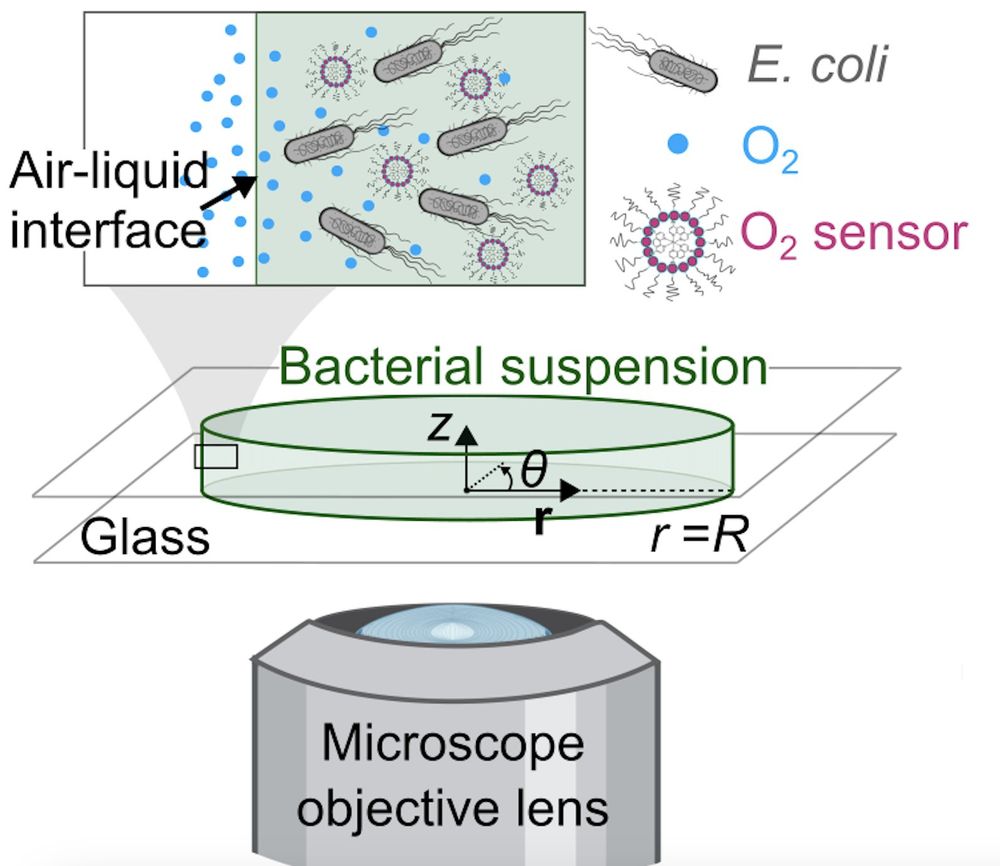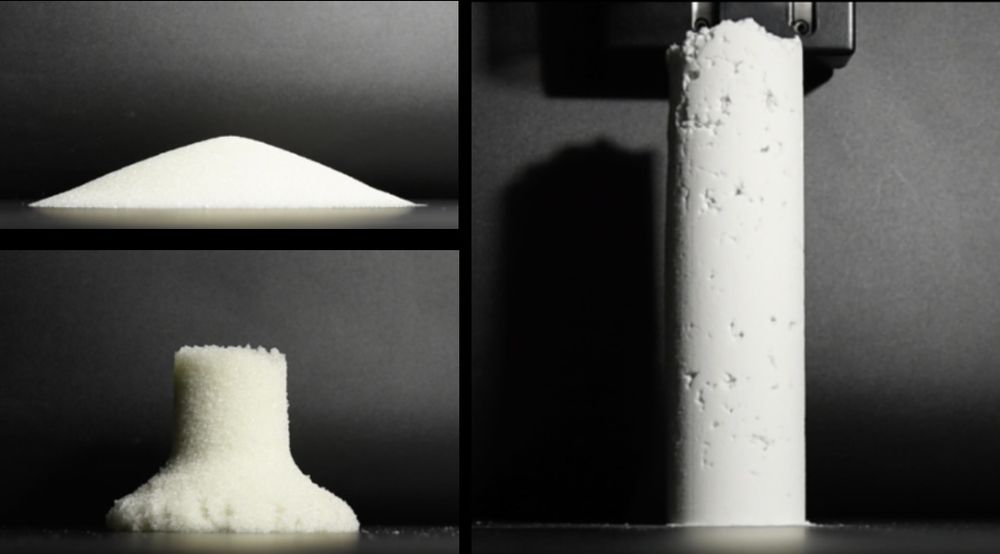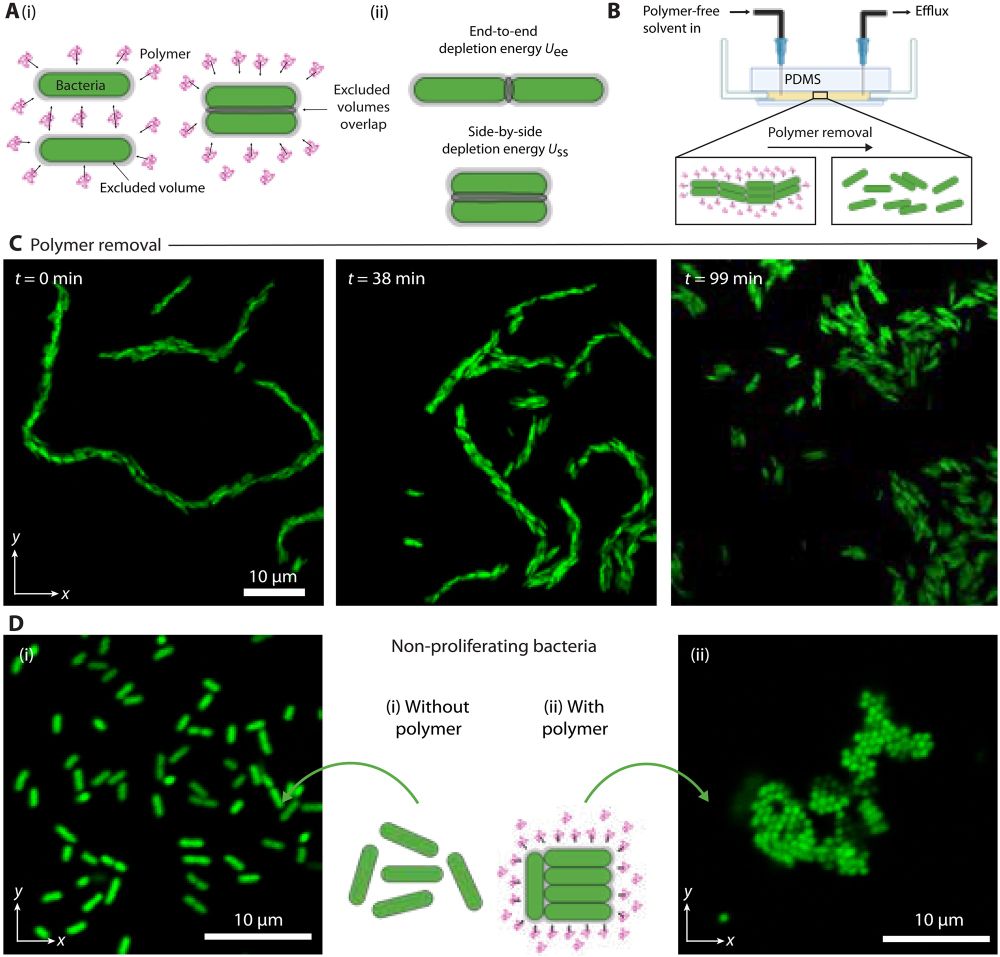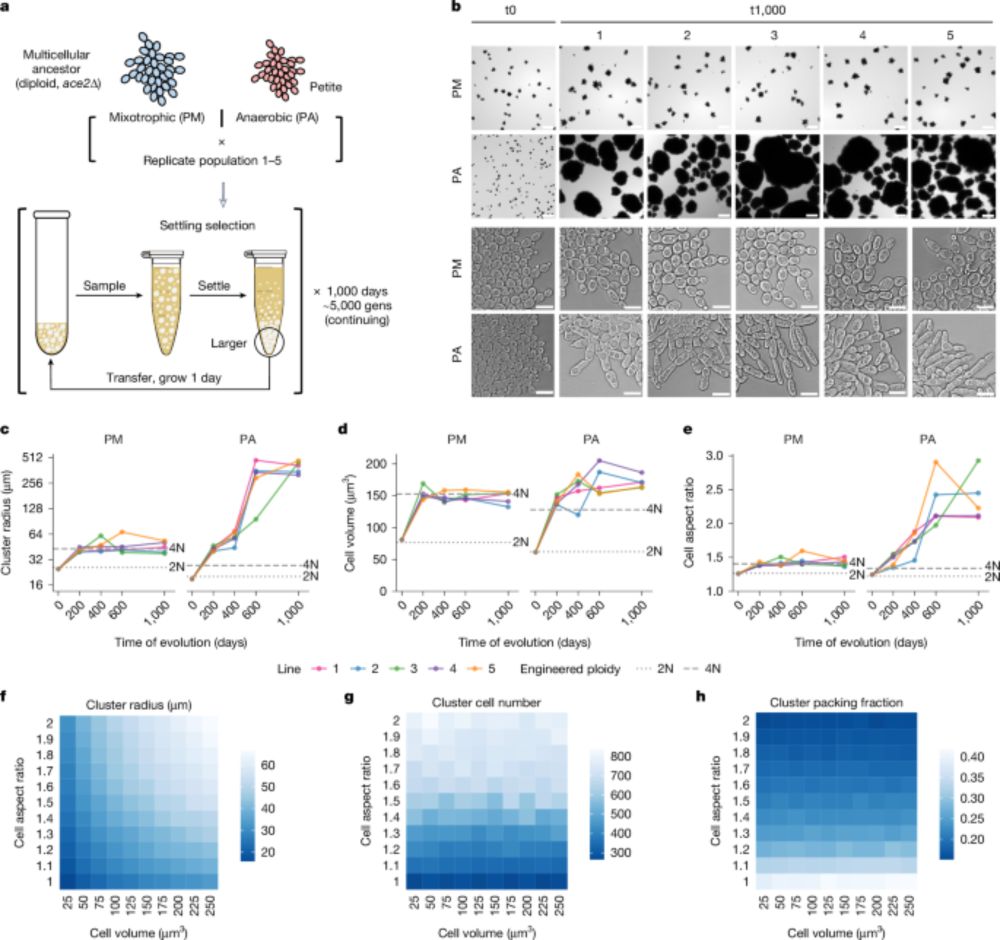Thank you, Saverio! It was a fun experiment, indeed, and there's so much more to explore :)
08.10.2025 18:33 — 👍 1 🔁 0 💬 0 📌 0
Excited to see this paper out @pnas.org
Microbial self-organization in response to self-made oxygen gradients! 🦠 🔄 🍥
07.10.2025 14:00 — 👍 6 🔁 1 💬 0 📌 1

PhD or Master's position available for Fall 2026!
Interested in how actin drives cell crawling, eating, dividing, or osmoregulation? What about pathogenesis of a brain-eating amoeba? Or eukaryotic evolution? If so, apply through my website: katrinavelle.wixsite.com/science/cont...
Please share!
05.10.2025 17:29 — 👍 42 🔁 28 💬 1 📌 4
We have a postdoc opening for a protistologist with biophysics inclinations to join our @hfspo.bsky.social project! (focus will be on characterising the morphology, ultrastructure and behaviour of excavates) #protistsonsky
Apply by Sept 17th (RTs appreciated!)
jobs.exeter.ac.uk/hrpr_webrecr...
06.08.2025 19:19 — 👍 47 🔁 49 💬 1 📌 0
Excited to release our latest work:
doi.org/10.1101/2025...
Here, we describe how confined bacterial suspensions self-organize into structured domains of different motilities, in response to oxygen limitations🦠🍥
Bluetorial follows! [1/8]
27.02.2025 17:28 — 👍 9 🔁 5 💬 1 📌 1
It was fun to uncover this story—bridging microbial physiology, biological pattern formation, & active matter physics. The results may even have implications for controlling microbes in applications. We'd love your feedback. Please report/share with whoever might be interested! [8/8]
27.02.2025 17:28 — 👍 2 🔁 1 💬 0 📌 0
Many biological fluids are polymer solutions, whose viscoelasticity can enhance cell swimming and promote large-scale mixing.
We showed that the core-shell organization also arises in polymer solutions, but with fascinating additional flow fluctuations. [7/8]
27.02.2025 17:28 — 👍 1 🔁 1 💬 1 📌 0

We then developed a biophysical model describing this interplay quantitatively. The model recapitulates the experiments, and also yields criteria for predicting the different ways in which confined bacterial populations self-organize under different conditions. [6/8]
27.02.2025 17:28 — 👍 1 🔁 1 💬 1 📌 0
Cells consume O2, creating a gradient that alters motility: (i) They move up the gradient toward the droplet boundary via aerotaxis, & (ii) They stop swimming in the anoxic droplet core and accumulate. These motility variations in turn reshape O2 fluxes. A feedback loop! [5/8]
27.02.2025 17:28 — 👍 1 🔁 1 💬 1 📌 0
By simultaneously measuring cell distributions, oxygen concentration, and swimming-generated fluid flow, we figured out that this spatial organization is driven by the interplay between cell metabolism-generated oxygen gradients and collective motility. [4/8]
27.02.2025 17:28 — 👍 1 🔁 1 💬 1 📌 0
Surprisingly, when the droplets are big and concentrated, the cells self-organize into a concentrated inner "core" of immotile cells surrounded by a more dilute outer "shell" of highly motile cells. (See movie in 1st tweet.) In some cases, the core shrinks and disappears. [3/8]
27.02.2025 17:28 — 👍 1 🔁 1 💬 1 📌 0

Bacteria often inhabit confined spaces, such as biological tissues/gels & soils/sediments, where metabolites are scarce. What influence does confinement have on a population of motile bacteria?
We addressed this question by studying quasi 2D droplets of swimming E. coli. [2/8]
27.02.2025 17:28 — 👍 1 🔁 1 💬 1 📌 0
Excited to release our latest work:
doi.org/10.1101/2025...
Here, we describe how confined bacterial suspensions self-organize into structured domains of different motilities, in response to oxygen limitations🦠🍥
Bluetorial follows! [1/8]
27.02.2025 17:28 — 👍 9 🔁 5 💬 1 📌 1
The 🪱 mania continues!
In our latest study, led by Rosa, we explored the locomotion and dynamics of living worms—acting as active polymers—navigating a porous environment made of 3D-printed pillar arrays. And we found something surprising...
13.02.2025 08:45 — 👍 16 🔁 3 💬 1 📌 0

Spatial population dynamics of bacterial colonies with social antibiotic resistance
#PNAS by @marlis.bsky.social and late Kevin B. Wood
www.pnas.org/doi/10.1073/...
13.02.2025 16:09 — 👍 39 🔁 7 💬 1 📌 2

Stickiness matters! From powder handling to geophysical flows, cohesion in granular material plays a crucial role. We review in Soft Matter @roysocchem.bsky.social experimental approaches to create and control inter-particle adhesion pubs.rsc.org/en/content/a...
03.02.2025 16:54 — 👍 16 🔁 4 💬 2 📌 0

🄱🄸🄾🄵🄸🄻🄼
🄱🄸🄾🄿🄷🅈🅂🄸🄲🅂
Fascinating work from Sebastian Gonzalez La Corte, Sujit Data, et al at CalTech on polymer-induced entropic attractions that hinder diffusion and lead bacteria to form long spaghetti-like cables within mucus and biofilms
Paper in Science Advances: www.science.org/doi/10.1126/...
19.01.2025 14:10 — 👍 129 🔁 21 💬 5 📌 0
Fresh off the press, our work on wing deployment in Drosophila 🪰:
www.nature.com/articles/s41...
Work by: Simon Hadjaje, Ignacio Andrade-Silva, Marie-Julie Dalbe and Raphaël Clément
11.12.2024 14:00 — 👍 151 🔁 51 💬 8 📌 9
Can I please be added here?
22.11.2024 15:38 — 👍 1 🔁 0 💬 0 📌 0
This is a beautiful work Nico! Congrats!
22.11.2024 15:36 — 👍 1 🔁 0 💬 1 📌 0
Starter Pack: Collective #CellMigration /Dynamics is growing. Looking at related emergent phenomena eg. #intercallation, dorsal closure or branching #morphogenesis? Reach out! Also modelers, soft-matter physicists & YOUNG scientists etc etc!
go.bsky.app/DLUDYX3
#cellbio #SoftMatterPhysics #science
19.11.2024 16:25 — 👍 70 🔁 39 💬 26 📌 4
Can I please be added here?
22.11.2024 15:35 — 👍 1 🔁 0 💬 0 📌 0
Can I please be added here?
22.11.2024 15:34 — 👍 1 🔁 0 💬 1 📌 0
Can I please be added here?
22.11.2024 15:32 — 👍 1 🔁 0 💬 1 📌 0
Can I please be added here?
22.11.2024 15:31 — 👍 0 🔁 0 💬 1 📌 0
Yeah, right 😅
22.11.2024 15:25 — 👍 1 🔁 0 💬 0 📌 0
💥Beyond happy 💥 Our work is now published in PNAS!
www.pnas.org/doi/10.1073/...
With Gloria Canales & @mazi1.bsky.social we studied how the single celled alga Pyrocystis lunula 🌙 move their chloroplast in response to strong light.
Get ready for some fun mechanics, signals and organelle motion! 🧵
19.11.2024 09:47 — 👍 117 🔁 35 💬 5 📌 4
Fluid Physicist | PhD-ing at UIUC I Previously at ICTS-TIFR and IISc | Complex fluids, Dynamical systems, Turbulence, Planet Formation
Fond of maths, ecology, and literature | Neurodivergent | Queer 🏳️🌈| Ambedkarite✊🏿 | Dabbles in critical caste studies
PhD at Johns Hopkins Biophysics | IISERM'18
Researcher in Statistical Physics
PhD Student at the University of Augsburg - Theoretical Physics "Mesoscopic Physics of Life"
@m-pol.bsky.social
https://www.linkedin.com/in/ss-gomez/
Interested in #physics of life. Theorist but some of my best friends are experimentalists.
PhD student @ncbsbangalore.bsky.social | Biophysics of growth, motility, and morphology | Undergrad @ IISER Bhopal | Exploring the squishy side of science with @tapomoy89.bsky.social
https://www.sreepadmanabh.com/
PhD student in mathematical biology/biophysics at Newcastle University, working on modelling the motility and chemo responses of microbes in complex environments
Research Fellow at Imperial.
Data | Fluid | Model Discovery
Lab of Sujit Datta @caltech.edu studying transport of soft (“squishy”) and living systems to address challenges in biotech, energy, medicine, & sustainability.
https://www.dattalab.caltech.edu/
PhD-ing on Zebrafish development @fabianlab || Capturing life through lens and doodling are my favorite escapes..!!
MSCA fellow at @crg.eu w/M. Dias and @jonnyfrazer.bsky.social
> Biological Physics | Proteins | Comp Bio | ML
https://scholar.google.com/citations?user=n55NtEsAAAAJ&hl=en
MD-PhD student at The Ohio State University. Interested in academic medicine and translational research on chronic biofilm-mediated bacterial infections.
✅ PhD (2025)
🔜 MD in progress (2027)
🔜 Physician Scientist (forever)
(All views are my own)
I am an interdisciplinary scientist at the intersection of physics, biology, neuroscience, and engineering, dedicated to uncovering the processes that make hearing possible. Check my website: https://www.gianoli.eu
The Yeast journal publishes articles and reviews on the most significant developments in unicellular fungi biology.
https://onlinelibrary.wiley.com/journal/10970061
Posts by @melaniadangiolo.bsky.social
#Yeast #mycology #fungi #microbiology
Postbac in the Peifer Lab at UNC Chapel Hill
Studying regulators in collective cell migration using a Drosophila model 🔬
Looking for graduate school opportunities 🧬
Husband - Dad of 2 - Scientist 🇨🇱 Chilean expat.
I love to study how cells walk & talk.
PI of the @cellcommlab.bsky.social
#CellMigration #CellComm #calciumsignaling #organelles 🧪🔬
Postdoc Research Associate in the Lennon Lab, Manchester Cell-Matrix Centre, University of Manchester
Lover of extracellular matrix, basement membranes, microscopy 🔬
How cells stick to things and move around, microscopy, cats, garden bugs, forays into machine learning, occasional political snark. Asst Prof University of Bath, UK 🏳️🌈
Biochemistry PhD student at McGill. Studies and loves talking about RTKs in lung cancer. Coffee and cafe lover. Also, black hole enthusiast.
biophysics. post-doc @XavierTrepat lab barcelona. currently focused on intermediate filaments and epithelial tissues.















